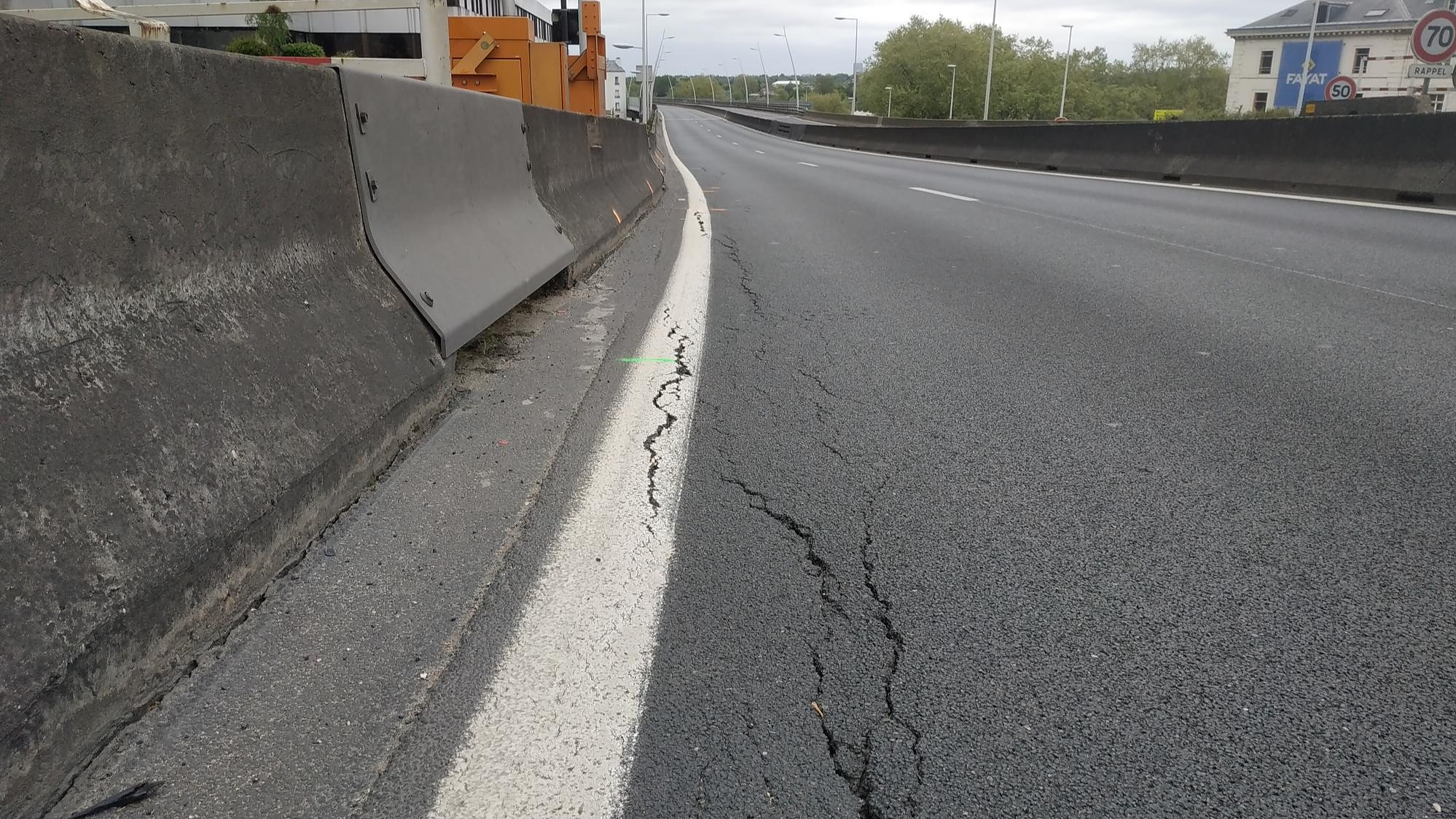Whether it's a museum toilet in Italy, the toilet on an ICE train or plane, or the German parking lot on the Autobahn: at some point we'll have to pay it a visit. Everywhere it seems to be teeming with a wide range of bacteria, viruses or fungi: salmonella, hepatitis A, flu and corona viruses - or faeces. How likely are such infections?
Dirk Bockmühl is a professor of hygiene and microbiology at the Rhine-Waal University of Applied Sciences and explains which hygienic strategies should be observed when using the toilet in public spaces.
WORLD: Mr. Bockmühl, let's mentally go through a public toilet: how do I open the door: open it with my sleeve, a handkerchief or my shoulder?
Dirk Bockmühl: Stepping into a toilet is actually not really critical. In the end, the most important thing is washing your hands.
WORLD: Oh, no spoilers please!
Bockmuehl: OK. But I would really think it would be exaggerated to open the toilet door with your sleeve. In fact, the most important thing is to wash your hands at the end.
WORLD: Understood. Nevertheless, many people ask themselves - if there is a choice - "Which cabin do I take?" According to a study, most people intuitively avoid the first and last cabin and opt for the middle one. Which cabin would you recommend?
Bockmühl: The middle cabins are always the dirtiest. Nevertheless, the visible soiling is often not the real problem, because you don't see which germs on the hands of the predecessors touched the door handles. The real problem is the hand contact surfaces, which don't look dirty at first glance.
WORLD: After the door handle, one of the first contact surfaces is the lock or bolt, which, however, is often associated with a certain disgust.
Bockmühl: The hands are the means of transport for germs of all kinds. Because you can find all kinds of microorganisms in public toilets, but above all faecal germs: These germs are particularly responsible for diarrheal diseases. These infections occur via the so-called faecal-oral route, i.e. out at the bottom and back in at the top. But if you pay attention to a few things like washing your hands, you can prevent this.
WORLD: Acute question that affects women more: if there are no hooks in the cabin, where to put the handbag? Put it on the ground or not?
Bockmühl: Of course it's disgusting, but how often have you licked the bottom of your handbag? So there is no direct route of infection again. Just clean the bag afterwards, then it's not a big problem. A lot of pathogens have to be present in order for you to become infected. I repeat myself, but this is about the fecal-oral route.
WORLD: Let's get to the next explosive question: sit down, crouch over the toilet seat, prepare it with toilet paper or lay out the toilet paper seat you brought with you?
Bockmühl: I find the preparation of the toilet seat difficult: I always ask myself what is more likely if I just sit down on the seat for a moment or maybe crouch over it? Or do I first prepare everything for five minutes, lay out toilet paper, wipe over it again and afterwards maybe because I wasn't paying close attention and got germs on my hands?
WORLD: What about skin irritation, venereal diseases or a bladder infection if you sit too far forward on the glasses?
Bockmühl: It's all rather unlikely, but women are more at risk here than men. Intestinal bacteria get into the vagina mainly through incorrect wiping technique, i.e. if you do not wipe from front to back, but vice versa. You get infected from yourself and can get a bladder infection. In men, the urethra is anatomically a little further away.
WORLD: What can men get or anyone who sits on a public toilet seat for too long?
Bockmühl: It's relatively uncritical if your thighs touch the toilet seat. Aside from places like hospitals, where there are immunocompromised people with open wounds and the threat of resistant bacteria, intact skin is a virtually impassable barrier to germs. The exception is skin fungi such as athlete's foot, but even that is unlikely with open sandals on a public toilet.
WORLD: Shoes, great hint: How disgusting is it when you go into a toilet where the floor in front of the bowls is suspiciously damp? You have that under your soles.
Bockmühl: Yes, that's disgusting. However, urine is actually sterile and more of an odor problem than a source of infection. It would be different with faecal contamination. I would always take off your shoes in front of the front door, but it's difficult to get into your car because you've used the toilet on the motorway parking lot. For children, I would recommend taking off their shoes in case toys or food fall on the floor while driving.
WORLD: Oh, speaking of traps: Assuming you don't have much, but your cell phone with you: Where do I put it so that it doesn't accidentally fall out of my pocket into the toilet? You can't go on the floor.
Bockmühl: You shouldn't take your mobile phone with you or even use it in public toilets, but leave it in your pocket or trouser pocket and only touch it again after you've washed your hands. You should avoid placing it on the cistern, the floor or the toilet roll holder.
WORLD: Then we come to the actual hygiene part of going to the toilet: we grab the toilet paper, maybe touch the roll dispenser. Terrible?
Bockmühl: Toilet paper itself is very, very uncritical because it is a poor breeding ground for microorganisms. It's hygienically designed so you don't have to hold it for long to tear it off and no one has touched it before. The roll containers are also rarely contaminated with an infectious dose of germs.
WORLD: There should be people who use toilet brushes for the following guests out of courtesy. And people who press their finger on a public toilet flush. What do you advise them?
Bockmühl: You can use a piece of clean toilet paper to protect your hand for both. But here, too, the transfer of microorganisms is usually not that great. Of course, it makes a difference whether you touch a toilet flush that has just been disinfected or use a dirty toilet brush. However, you have to ingest a lot of these faecal germs from typical diarrheal diseases such as salmonella and the like before you get sick. Such bacterial counts are more likely to be found in a badly cooked chicken, but not on a toilet flush.
WORLD: In some public toilets it says that you should close the toilet lid before flushing to stop the spread of corona viruses. Unfortunately, there aren't always toilet lids.
Bockmühl: Compared to viruses, bacteria are very large and heavy and therefore do not stay in the air for as long when aerosols are whirled out of the bowl into the air. It's always a good idea to close the toilet lid, though. And yes, it is possible that a person infected with corona, flu or cold viruses coughed in front of us in the cabin. That's why it's always good to put your mask on in times of a pandemic. But overall, our immune system protects us from most contact with germs, unless you belong to a risk group.
WORLD: So the risk of catching diarrhea pathogens by flushing the toilet or flu viruses through the door handle is low, unless I pick my nose on the toilet, right?
Bockmühl: You could say that. Many droplet infections are also transmitted in this way. Someone sneezes into my hand, which I shake and then pick through my nose and bring the germs to my mucous membrane. The hands are almost always the focal point. It's better to wash my hands once more than to constantly think about what I can touch or clean everything with the disinfectant gel I've brought with me.
WORLD: When in doubt, do disinfectants replace hand washing?
Bockmühl: It is certainly not enough to avoid contact with a water tap or soap dispenser just to use your own disinfectant. Washing hands after going to the toilet is the most important preventive measure. Everything I've touched up to that point I don't set to zero, but to a very reduced value. In addition, you can use a disinfectant or wipe in places like the plane or ICE toilet. It's difficult with dirty hands. Apart from the need for a clinical environment or hygienically sensitive stories, one must emphasize: good, thorough, correct hand washing is completely sufficient. So soap properly, because the surfactants in the soap optimally remove and partially kill the microorganisms.
WORLD: There is one problem at the end: How do I get out of the toilet room?
Bockmühl: That's when you still hold the towel or paper towel you used to wipe your hands with and use it to open the doorknob. Or take a piece of toilet paper if there was only one air dryer - which are very unhygienic by the way.
WORLD: How relaxed are you as a microbiologist on a plane or on a train when you have to?
Bockmühl: Very relaxed, because I know the risks. I only get uncomfortable when there is no running water or the soap is empty.
Dirk Bockmühl has a doctorate in microbiology and works as a professor for hygiene and microbiology at the Rhine-Waal University of Applied Sciences in Kleve. He is the author of the non-fiction book "Keime daheim" and a member of the board of the GDCh specialist group "Chemistry of washing" and a member of the Association for General and Applied Microbiology (VAAM) and the German Society for Hygiene and Microbiology (DGHM).
This article was first published in July 2022.

 B:SM will break its investment record this year with 62 million euros
B:SM will break its investment record this year with 62 million euros War in Ukraine: when kyiv attacks Russia with inflatable balloons loaded with explosives
War in Ukraine: when kyiv attacks Russia with inflatable balloons loaded with explosives United States: divided on the question of presidential immunity, the Supreme Court offers respite to Trump
United States: divided on the question of presidential immunity, the Supreme Court offers respite to Trump Maurizio Molinari: “the Scurati affair, a European injury”
Maurizio Molinari: “the Scurati affair, a European injury”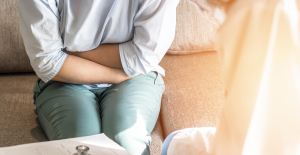 Irritable bowel syndrome: the effectiveness of low-carbohydrate diets is confirmed
Irritable bowel syndrome: the effectiveness of low-carbohydrate diets is confirmed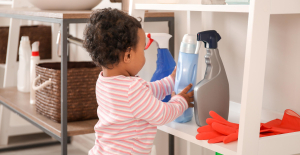 Beware of the three main sources of poisoning in children
Beware of the three main sources of poisoning in children First three cases of “native” cholera confirmed in Mayotte
First three cases of “native” cholera confirmed in Mayotte Meningitis: compulsory vaccination for babies will be extended in 2025
Meningitis: compulsory vaccination for babies will be extended in 2025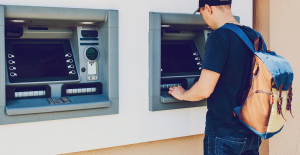 When traveling abroad, money is a source of stress for seven out of ten French people
When traveling abroad, money is a source of stress for seven out of ten French people Elon Musk arrives in China to negotiate data transfer and deployment of Tesla autopilot
Elon Musk arrives in China to negotiate data transfer and deployment of Tesla autopilot Patrick Pouyanné, CEO of TotalEnergies, is very reserved about the rapid growth of green hydrogen
Patrick Pouyanné, CEO of TotalEnergies, is very reserved about the rapid growth of green hydrogen In the United States, a Boeing 767 loses its emergency slide shortly after takeoff
In the United States, a Boeing 767 loses its emergency slide shortly after takeoff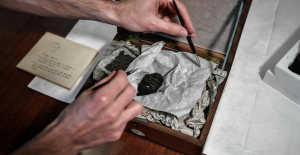 A charred papyrus from Herculaneum reveals its secrets about Plato
A charred papyrus from Herculaneum reveals its secrets about Plato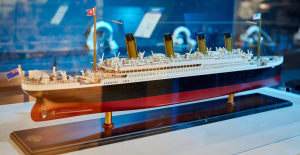 The watch of the richest passenger on the Titanic sold for 1.175 million pounds at auction
The watch of the richest passenger on the Titanic sold for 1.175 million pounds at auction Youn Sun Nah: jazz with nuance and delicacy
Youn Sun Nah: jazz with nuance and delicacy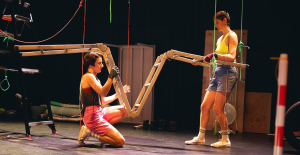 Paris Globe, a new international theater festival
Paris Globe, a new international theater festival Skoda Kodiaq 2024: a 'beast' plug-in hybrid SUV
Skoda Kodiaq 2024: a 'beast' plug-in hybrid SUV Tesla launches a new Model Y with 600 km of autonomy at a "more accessible price"
Tesla launches a new Model Y with 600 km of autonomy at a "more accessible price" The 10 best-selling cars in March 2024 in Spain: sales fall due to Easter
The 10 best-selling cars in March 2024 in Spain: sales fall due to Easter A private jet company buys more than 100 flying cars
A private jet company buys more than 100 flying cars This is how housing prices have changed in Spain in the last decade
This is how housing prices have changed in Spain in the last decade The home mortgage firm drops 10% in January and interest soars to 3.46%
The home mortgage firm drops 10% in January and interest soars to 3.46% The jewel of the Rocío de Nagüeles urbanization: a dream villa in Marbella
The jewel of the Rocío de Nagüeles urbanization: a dream villa in Marbella Rental prices grow by 7.3% in February: where does it go up and where does it go down?
Rental prices grow by 7.3% in February: where does it go up and where does it go down? Even on a mission for NATO, the Charles-de-Gaulle remains under French control, Lecornu responds to Mélenchon
Even on a mission for NATO, the Charles-de-Gaulle remains under French control, Lecornu responds to Mélenchon “Deadly Europe”, “economic decline”, immigration… What to remember from Emmanuel Macron’s speech at the Sorbonne
“Deadly Europe”, “economic decline”, immigration… What to remember from Emmanuel Macron’s speech at the Sorbonne Sale of Biogaran: The Republicans write to Emmanuel Macron
Sale of Biogaran: The Republicans write to Emmanuel Macron Europeans: “All those who claim that we don’t need Europe are liars”, criticizes Bayrou
Europeans: “All those who claim that we don’t need Europe are liars”, criticizes Bayrou These French cities that will boycott the World Cup in Qatar
These French cities that will boycott the World Cup in Qatar MLS: new double for Messi who offers victory to Miami
MLS: new double for Messi who offers victory to Miami PSG-Le Havre: Ramos on his way, Kolo Muani at the bottom of the hole… Favorites and scratches
PSG-Le Havre: Ramos on his way, Kolo Muani at the bottom of the hole… Favorites and scratches Football: Vasco da Gama separates from its Argentinian coach Ramon Diaz
Football: Vasco da Gama separates from its Argentinian coach Ramon Diaz F1: for the French, Ayrton Senna is the 2nd best driver in history ahead of Prost
F1: for the French, Ayrton Senna is the 2nd best driver in history ahead of Prost




